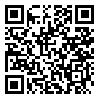Volume 30, Issue 190 (11-2020)
J Mazandaran Univ Med Sci 2020, 30(190): 109-118 |
Back to browse issues page
Download citation:
BibTeX | RIS | EndNote | Medlars | ProCite | Reference Manager | RefWorks
Send citation to:



BibTeX | RIS | EndNote | Medlars | ProCite | Reference Manager | RefWorks
Send citation to:
Ghasemi-Semeskandeh D, Bandalizadeh Z, Aarabi M, Kashi Z, Mohammadpour R A. Trend of Changes in Blood Sugar and Glycated Hemoglobin in Electronic Health Records, Sari, Iran 2012- 2018. J Mazandaran Univ Med Sci 2020; 30 (190) :109-118
URL: http://jmums.mazums.ac.ir/article-1-14390-en.html
URL: http://jmums.mazums.ac.ir/article-1-14390-en.html
Dariush Ghasemi-Semeskandeh 

 , Zainab Bandalizadeh
, Zainab Bandalizadeh 
 , Mohsen Aarabi
, Mohsen Aarabi 
 , Zahra Kashi
, Zahra Kashi 
 , Reza Ali Mohammadpour
, Reza Ali Mohammadpour 




 , Zainab Bandalizadeh
, Zainab Bandalizadeh 
 , Mohsen Aarabi
, Mohsen Aarabi 
 , Zahra Kashi
, Zahra Kashi 
 , Reza Ali Mohammadpour
, Reza Ali Mohammadpour 


Abstract: (2587 Views)
Background and purpose: High prevalence of Type 2 Diabetes Mellitus (T2DM) and its demand for regular care have resulted in a massive amount of electronic health records (EHRs). Hemoglobin A1c (HbA1c) and Fasting Blood Sugar (FBS) levels are two widely-used diagnostic measures for evaluation of diabetes care. This study aimed at assessing Family Medicine Plan (FMP) and exploring the trend of changes in FBS and HbA1c levels in patients attending a referral lab affiliated with Mazandaran University of Medical Sciences.
Materials and methods: This cross-sectional survey was carried out in 12761 EHRs of a registry database containing the results of blood sugar tests and demographic features selected from over 250 thousand EHRs from 2012-2018. The records were categorized according to normal and abnormal levels of HbA1c (cut-off at 7%). The bivariate logistic regression model was performed by R v.3.6.1 and ggplot2 for data visulazation.
Results: Abnormal HbA1c levels were seen in 37.1% of women, 36.7% of men, and 36.7% of the general population. There were significant associations between HbA1c level and age, type of insurance, FMP, kind of care plan, and the year of testing (P<0.001), but, no significant relationship was found between HbA1c level and gender (P>0.05).
Conclusion: Despite the increasing prevalence of T2DM in Iran, the trend of blood sugar changes during these years showed that changes in HbA1c level was lower than 7% in studied citizens. Considerable attention to self-management in recent years indicates improvements in diagnosis and care of citizens at-risk of diabetes.
Materials and methods: This cross-sectional survey was carried out in 12761 EHRs of a registry database containing the results of blood sugar tests and demographic features selected from over 250 thousand EHRs from 2012-2018. The records were categorized according to normal and abnormal levels of HbA1c (cut-off at 7%). The bivariate logistic regression model was performed by R v.3.6.1 and ggplot2 for data visulazation.
Results: Abnormal HbA1c levels were seen in 37.1% of women, 36.7% of men, and 36.7% of the general population. There were significant associations between HbA1c level and age, type of insurance, FMP, kind of care plan, and the year of testing (P<0.001), but, no significant relationship was found between HbA1c level and gender (P>0.05).
Conclusion: Despite the increasing prevalence of T2DM in Iran, the trend of blood sugar changes during these years showed that changes in HbA1c level was lower than 7% in studied citizens. Considerable attention to self-management in recent years indicates improvements in diagnosis and care of citizens at-risk of diabetes.
Type of Study: Research(Original) |
Subject:
Biostatistics
Send email to the article author
| Rights and permissions | |
 |
This work is licensed under a Creative Commons Attribution-NonCommercial 4.0 International License. |




